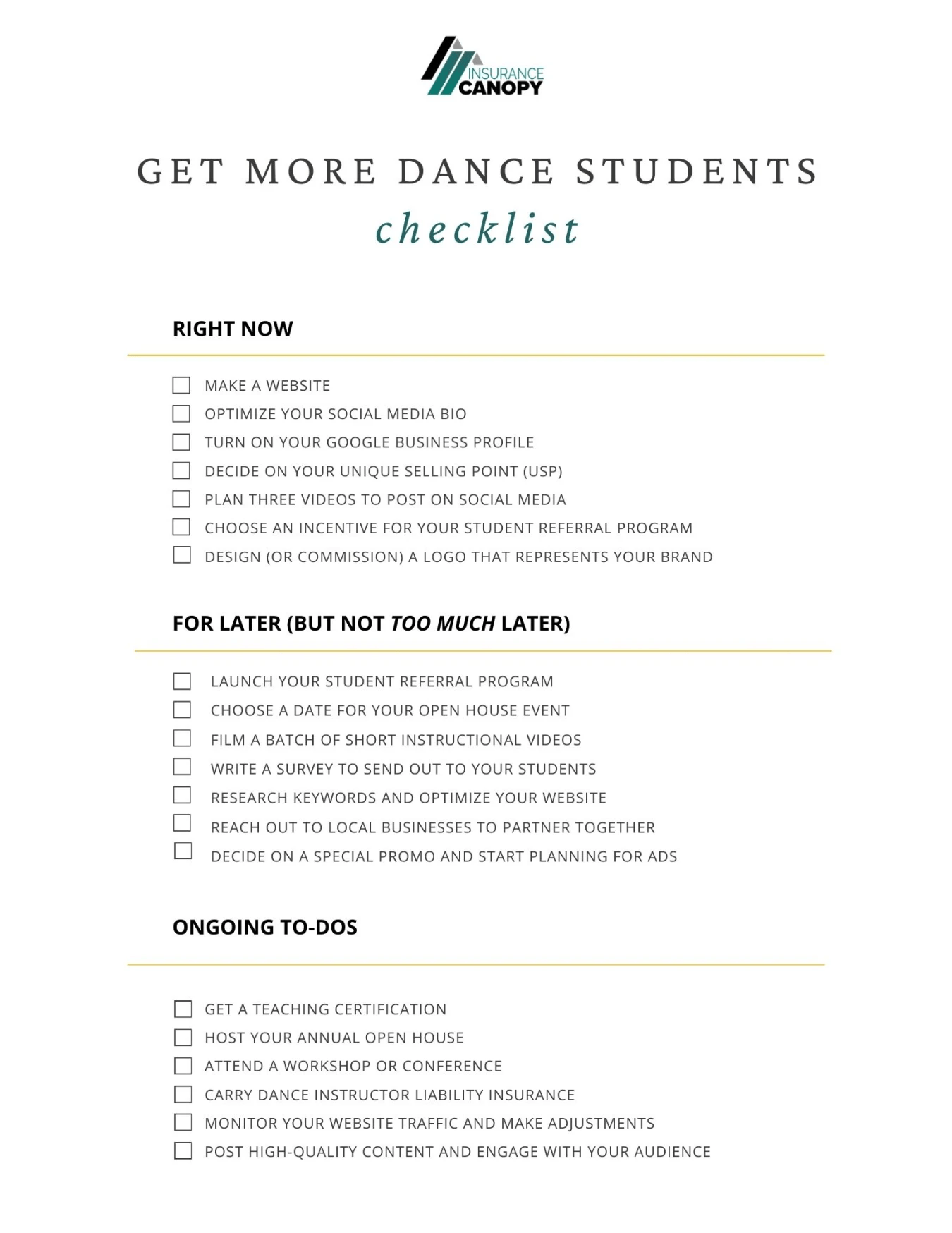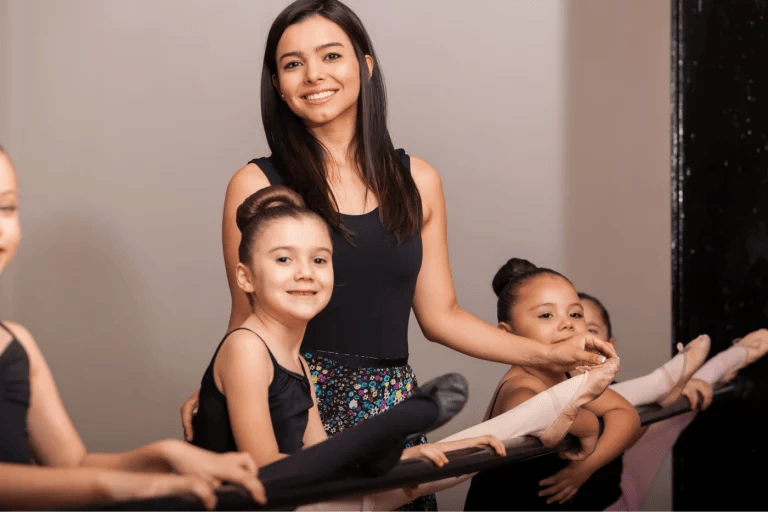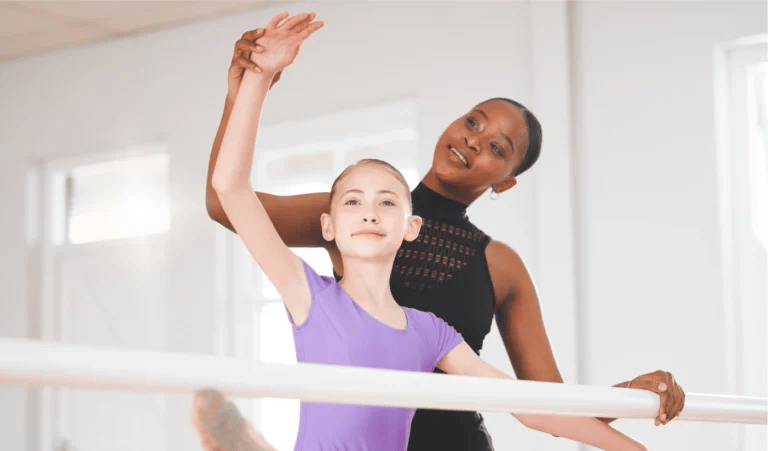Your dance knowledge is ready to be shared, but your studio feels a little too unoccupied. Sounds like you need to boost student enrollment!
Getting more dance students can seem challenging, especially considering seasonality, competition, and even economic downturns. But if you’re serious about filling up classes, your passion for marketing your business must match the love you have for your art.
Ready to go full out?
Marketing Strategies to Get More Dance Students
Bouncing back after COVID-19 shutdowns in 2020, your industry is now booming. The number of dance studios in the U.S. increased 4.5% in 2023.
To rise above the competition, your marketing strategy needs to level up. Start here.
Build Your Brand
What makes your studio or classes stand out? Your brand is your opportunity to make a strong impression on potential students.
So put the spotlight on your most enticing differentiator and let people know why they should choose you for dance classes. Then continue to build your brand so that it’s recognizable, consistent, and authentic.
- Nail your unique selling proposition (USP): Lots of instruction experience? A dance style no one else offers? Breakdowns of trending choreo? Highlight what sets you apart. This is the foundation of your brand!
- Create a professional logo: Put the outdated clip art down — it’s time. Invest in a professional logo and other design elements that reflect your brand personality. Use them across all your marketing materials to create awareness.
- Tell your story: Share how you got started and why you teach. Your future students want to know about the person behind your brand!
- Stay consistent: Maintaining brand consistency can increase your income by upwards of 20%. When your messaging and visuals feel the same with every interaction, the more trust is built and the higher the chances you’re securing new student sign-ups.
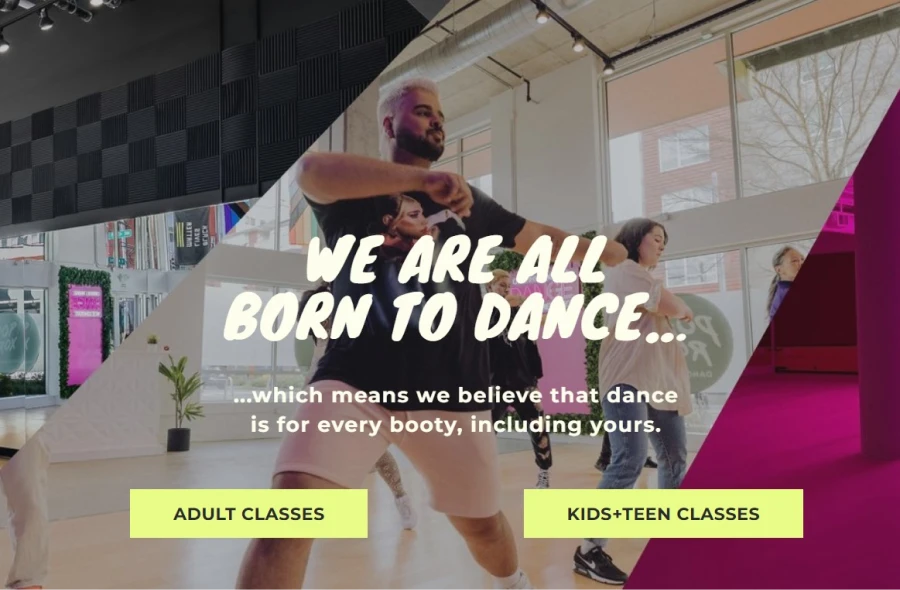
PopRox Dance Studio highlights their USP, inclusivity, front and center.
Create and Optimize a Website
You’re in the business of helping students perfect their turnouts, or maybe their top rock or tango. But the truth is teaching dance starts online — with your website.
If you don’t already have a website, put your next class on hold and make one ASAP. With intuitive, artificial intelligence (AI) website builders like Wix or Canva, you can make a beautiful website (with minimal tinkering!) that you’ll be proud to share with prospects.
Remember: Nearly half of all internet users perceive a business’ credibility based on its web design.
After you click “publish,” you need to optimize your website. Website optimization covers a broad range of best practices, but you can set yourself up for success by starting with these tips:
- Ensure mobile-friendliness: People are looking you up on their phones; make sure your website looks good on the small screen, too.
- Double check the UX: Design your website with user experience (UX) in mind. Is it easy to navigate? Does it load quickly? Does your dropdown menu make sense?
- Include relevant keywords: Research which keywords potential students might use to find your classes and include those keywords strategically in your website copy. This is the foundation of SEO, or search engine optimization, strategy — basically, how you get “found”!
- Claim your free Google Profile: Set up your Google Business Profile and add your website link to make it effortless for local searchers to register for a class online.
- Have a clear call to action (CTA): You ultimately want website visitors to book a class or register for the season, so don’t lose them along the way. Your CTAs should be prominent and clear. Try words like “Register Now” or “Book a Class.”
Optimizing your dance website will be a continuous process. Take small steps now for a brighter business future — maybe even one with sold-out classes!
Level Up Your Social Media Game
Search the “#dance” on Instagram and you’ll see 185 million posts come up. And on TikTok? A whopping 448 million. That’s a lot of content — and a lot of eyes on your industry.
If you want to learn how to get more students for your dance studio, look to social media, especially visual platforms like Instagram and TikTok where dance trends gain momentum fast.
Committing to your business social media accounts can feel daunting, but remember the goal is to connect with your students and leads. They’re out there. You just need to reach them.
- Optimize your bios: Keywords aren’t just for your website — add them to your bio and to your username or profile name. Your bio is also a great place to include a condensed version of your USP.
- Share high-quality content: Post videos of you teaching dance class, behind-the-scenes snippets, or bite-sized dance tutorials. With permission, highlight students in performance videos filmed during class or recitals to demonstrate your ability as a teacher, showcase your current students’ learning, and also allow potential students to envision themselves in your class. That’s a win-win-win.
- Try a campaign: Launch a campaign on your social media account asking users to either share your content, share their own content with your hashtag, or tag a few friends in your comment section for the chance to win a prize like a free class or studio swag.
- Don’t forget to engage: Post regularly and interact with your followers by liking and responding to their comments. Show how human your brand is!
Need a little social media pep talk? Take it from a dancer with 13 million YouTube subscribers:
“Everyone wants to know how they can grow on social media … The key to growth lies in finding your authentic voice and connecting with your circle on a deeper level. Start by networking, and watch your growth accelerate 10x.”
Matt Steffanina, Founder of DNCR Dance Academy Tweet
Launch a Student Referral Program
Word-of-mouth referrals are a powerful way to increase your student roster.
There are ways to get creative here, but the basic formula is to offer your students an incentive to bring in friends or family. Incentives could include:
- Free classes
- Discounts on tuition
- One-on-one sessions
- Gift cards for local businesses you partner with
- Social events or social media spotlights for your top referrers
- Studio merchandise (logo tees, leg warmers, water bottles, etc.)
- Free or discounted dancewear if you also retail these items through your studio
Keep the referral process simple. You can give your students referral cards or codes that are easy to share. Be sure to remind your students about this program regularly so it stays top of mind for them.
Advertise Specials and Discounts
Get more students dancing by lowering the barrier of pricing. By offering special promotions, you make it easier for potential students to give your dance classes a try.
And once you wow them with your dance teaching methods, these promos can keep students coming back season after season.
Try:
- Timely specials like holiday or back-to-school discounts
- Waived registration fees or gifts for early-bird signups
- Package discounts for siblings or friend groups
- Discounted group classes for birthdays or team-building events
- 24-hour flash sales with deeper discounts on classes
- Loyalty discounts for students who sign up every year
- One free trial class for any first-time student
- Dance-a-thons to raise money for local charities while offering discounts for students who participate
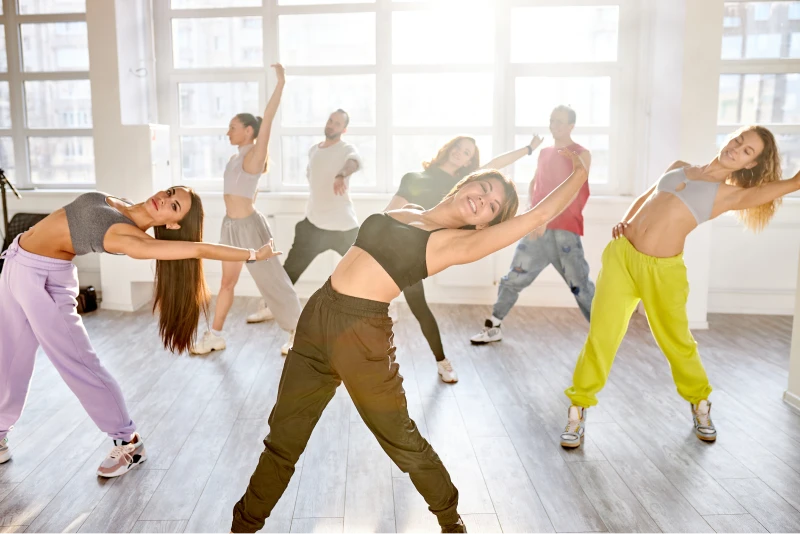
Effective Dance Teaching Methods
“As a dance educator, you are multitalented. You must first gain competency as a dancer. You master the skills and develop technique and knowledge.
As your dancing improves, you acquire a personal style in performing a dance form.
A dance educator is foremost a teacher but also an instructional strategist, a mentor, an advocate, a curriculum planner, an administrator, and a dance leader in the community or a professional organization.”
– Gayle Kassing, Danielle M. Jay, Dance Teaching Methods and Curriculum Design
Teaching dance requires you to wear a number of hats, but at the forefront of it all is your focus on your students.
The following teaching strategies for dance are crucial for retaining students and ensuring a positive learning experience.
- Set clear goals: Let your students know what the learning objectives are to give them a sense of direction going into each class.
- Give personalized attention: You already know each student learns at a different pace, so when possible, give feedback to cater to individual needs.
- Use positive reinforcement: Motivate students by celebrating their progress, no matter how big or small.
- Keep it engaging: Whether you’re going across the floor or teaching a new combo, make things fun and exciting by incorporating methods like partnering, demonstrations, storytelling, and friendly competition.
- Encourage creativity: Dance is a form of expression, so allow students to explore what movement means to them and support their journeys.
Video: Show and Explain Dance Techniques
Utilizing video is a smart way to enhance your dance teaching business. In this digital age, you can attract more students to your studio by pressing that record button and sharing your dance knowledge.
On your website, you can create a gallery of instructional videos demonstrating dance techniques in detail. These videos can support your current students’ education when they’re not at the studio, and they can also attract new students to sign up for classes once they see your dance teaching style in motion.
Use clips of these videos on your social media as teasers — let your future students know there’s much more to learn in class IRL.
With your students’ permission, you can also film portions of your classes and upload these clips on YouTube. Whether it’s warm-ups or a breakdown of a few 8 counts, these vignettes of you teaching dance class act as a highlight reel that shows off your expertise.
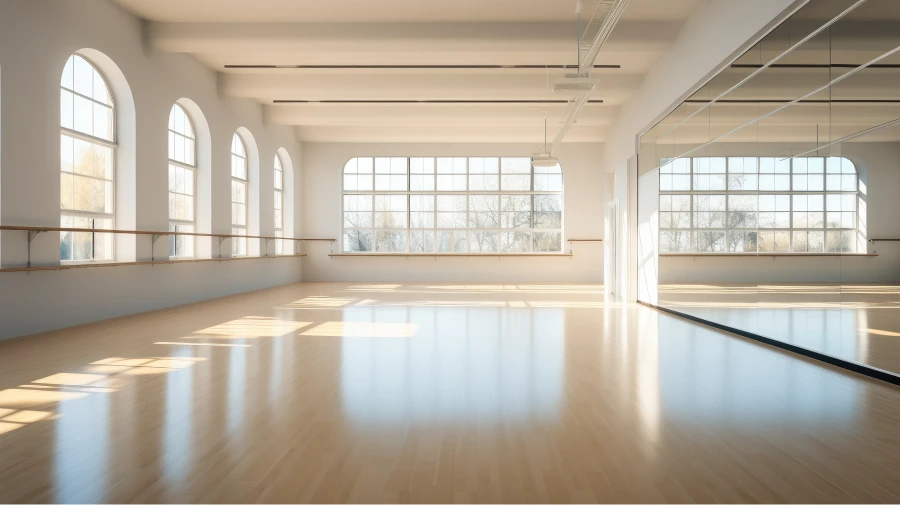
Dance Teaching Equipment to Consider
To teach dance effectively, you’ll need the right equipment. Some things you’ve probably already checked off your list are large wall mirrors, a high-quality sound system, a first aid kit, and a tablet or laptop for playing music and taking notes.
Depending on the style of dance you teach, you might also consider:
- Dance mats
- Turning boards
- Portable barres
- Stretch bands
- Recording equipment, such as a camera, tripod, and stabilizer
- Costumes, instruments, and props for cultural dance styles
Pro Tip: Replacing your moveable business gear when it gets damaged or stolen is expensive. Gear and Equipment Coverage from Insurance Canopy can pay for instances like these — up to $10,000 per policy year!
How to Use Feedback From Dance Students
Just as you offer helpful feedback to your students, it’s important to hear from them as well. Listening to their thoughts about your dance teaching style will help you improve as an educator.
This is also an opportunity to understand how your students are feeling about their goals and progress, so you can work with them toward success. Whether that be stronger second turns, cleaner footwork, or a smoother samba — now you have a shared vision to stretch toward.
Conduct regular student surveys to gather feedback. Encourage students to share their thoughts (whether before/after class or through email) and let them know you value what they have to say. You can also offer quick one-on-one chats periodically.
It’s not enough to receive feedback. Be sure to act on their input wherever possible!
Open House Events
You’ve been through your fair share of auditions — oh, the thrill! Hosting an open house is basically an audition for you as a teacher, and they’re a great way to show potential students who you are. (Their new fave teacher.)
Follow these steps for a successful open house:
- Promote, promote, promote!
- Make time for meet-and-greets.
- Offer a sample class to pique student interest.
- Plan a short performance to showcase current students.
- Create a welcoming atmosphere with refreshments and helpful staff if available.
- Don’t forget the incentives: a raffle drawing, exclusive discounts, or gifts for attendees.
Now’s the time to demonstrate how your prospects can benefit from your classes and answer any questions they may have. Getting people through your doors is the hardest part, so once they’re in your studio give them an enticing reason, like a one-day-only offer, to sign up and come back.
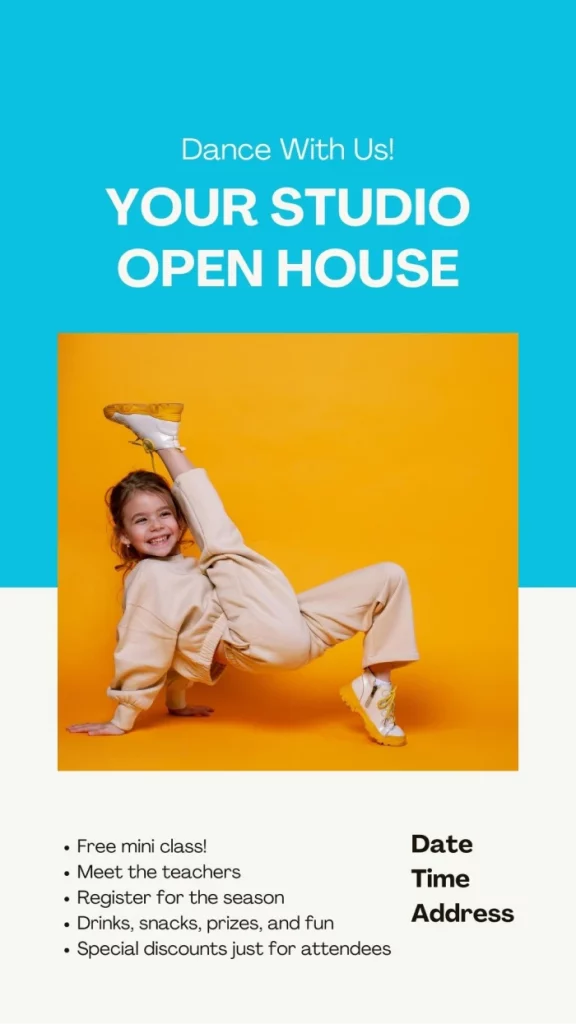
Customize this open house flyer for your next event.
Building Your Reputation and Expertise
Keep Learning With Continued Education
Teaching dance means keeping your education “on pointe.” If you want to signal that you’re serious about providing high-quality dance instruction, you need to stay sharp.
After all, would you want to learn from someone who hasn’t dropped in on a class in years? Set a good example for your students by working on your technique, too.
- Attend workshops, classes, and conventions: Head out to conferences like the National Dance Education Organization Conference or Dance Teacher Web Conference and Expo. Or, look for a workshop specific to your dance teaching style.
- Network with peers: Chances are, you’ve got teacher friends in the industry. Connect with them to share education insights and get inspired!
- Obtain a certification: Earning a dance teacher certification boosts your credibility, helping you to stand out and get more dance students. Look into a Dance Educator Certification (DEC) from the National Dance Education Organization or the Dance Masters of America (DMA) Certification.
Invest in Liability Insurance
Planning for recitals, posting on Instagram, running your next promotion — you have a lot going on. Worrying about accidents shouldn’t be part of it. In addition to using a waiver, dance teacher liability insurance is the easiest way to protect your business from all the what-ifs.
Students can get hurt while you’re teaching or they might accidentally damage the floor in your rented studio space. Without insurance, you could be responsible for footing these expenses.
Not only does carrying dance insurance give you peace of mind that you won’t have to pay out of pocket for costly claims, but it also shows that you take your business seriously and that you’re committed to providing a safe environment for your dancers.
Dance instructor liability insurance from Insurance Canopy starts at just $15/month. This industry-tailored policy combines general and professional liability coverage, so you can teach dance with full confidence.
With your insurance policy purchase, you also receive an insurance badge that you can display on your website as a trust signal.
FAQs About Getting More Dance Students
To attract new dance students, offer incentives like introductory discounts, free trial classes, referral bonuses, or studio membership benefits.
You can also partner with local businesses to provide joint incentives, i.e. book a class and get a discount from the partnering business.
To increase dance enrollment using social media, regularly post engaging content like class highlights, student success stories, BTS footage, or choreography set to trending audio.
Consider running targeted ads to widen your reach on social media, and be sure to connect with your audience via likes, comments, and shares.
Improve your dance studio’s visibility in the community by participating in local events and hosting free or discounted community workshops.
Try collaborating with local businesses on promotions.
Also, be sure to get your dance studio listed in any local directories and partner with schools in your area.
